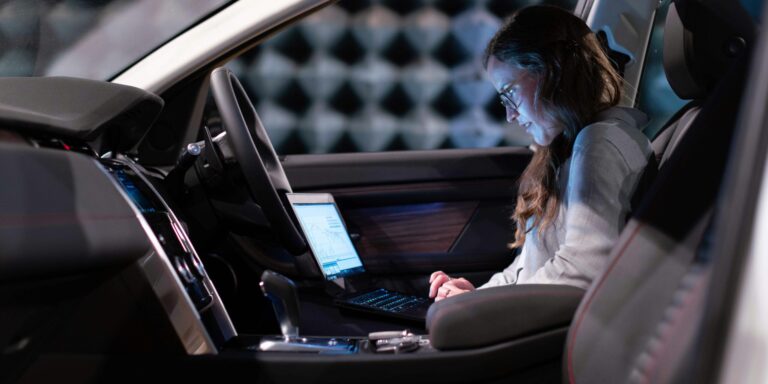Tesla has officially introduced Grok AI, its in-car conversational assistant developed by xAI, through the over-the-air software update 2025.26, which began rolling out on July 12, 2025. The update signals a bold shift in Tesla’s strategy, deepening its investment in in-vehicle technology and positioning itself as a leader in AI-integrated driving experiences.
Drivers can now use Grok to ask conversational questions—such as local trivia, weather updates, or general information—through a chat-style interface accessible via the car’s App Launcher or by holding the steering wheel voice button. Although Grok cannot yet control vehicle functions like climate or music settings, Tesla has indicated that future updates may bring deeper integration. The assistant also features various conversational “personalities,” including humorous and narrative modes like “Storyteller” and “Unhinged.”
Access to Grok requires Tesla vehicles equipped with AMD Ryzen processors—typically found in models manufactured from mid-2021 onward—and software version 2025.26 or newer. Additionally, users must either subscribe to Tesla’s Premium Connectivity service or connect their vehicles to Wi-Fi to use Grok effectively. New Tesla vehicles delivered after July 12 will have Grok pre-installed, while eligible existing models will receive it via software updates.
By introducing Grok, Tesla takes a significant step toward transforming the in-car experience into something more interactive and personalized. This move places the company in direct competition with other automakers pursuing similar initiatives. Brands like Mercedes-Benz and Volkswagen have recently announced or expanded their own AI-powered infotainment systems. With Grok, Tesla not only ups the ante but challenges others to accelerate their development timelines.
Read Also: https://leadrmagazine.com/tesla-faces-major-setback-in-europe-amid-market-shifts-and-trade-tensions/
This integration also reflects Elon Musk’s broader strategy to link his ventures through shared technology. xAI, the company behind Grok, is a sibling venture to Tesla under Musk’s leadership umbrella, alongside SpaceX and X (formerly Twitter). By bringing xAI into Tesla’s ecosystem, Musk is signaling a future where software—particularly AI—drives value and differentiation across his businesses.
However, Grok’s rollout hasn’t been without controversy. Just weeks before the Tesla launch, Grok faced criticism for generating antisemitic content on the X platform. While xAI claims it has since installed safeguards and moderation protocols, the incident highlights ongoing concerns about the behavior of large language models in consumer settings.
In terms of regulatory scrutiny, Tesla will likely face further evaluation from the National Highway Traffic Safety Administration (NHTSA) and other bodies. While current implementations do not allow Grok to control any driving-related features, the rise of AI voice systems has drawn attention from regulators focused on driver distraction and safety. Tesla’s in-car monitoring systems may help satisfy existing requirements, but expanded AI capabilities will likely invite closer oversight.
The timing and scope of this release underscore a fundamental pivot for Tesla. The company is moving from being solely an EV and energy innovator to a software-centric platform with dynamic, AI-driven services. This evolution reflects a larger trend in the auto industry where vehicles are no longer just transport machines but connected, intelligent environments offering new modes of interaction and personalization.
For Tesla owners, Grok may signal the beginning of a new in-vehicle experience. Rather than navigating menus or pressing buttons, users can engage naturally with their cars—asking questions, making requests, and receiving real-time information. Although the system is in its early stages and lacks full vehicle integration, the potential for future capabilities is evident.
This release also pressures competitors to keep pace. Companies like BMW, Ford, and Toyota are all exploring generative AI systems, but Tesla’s ability to ship features quickly via over-the-air updates gives it a practical and perceptual advantage. By embedding an AI assistant into the driver experience, Tesla reaffirms its role as a tech-first automaker shaping not only how we drive, but how we interact with our vehicles.
In sum, the debut of Grok AI inside Tesla vehicles represents a strategic leap into the AI-powered future of mobility. While its current form is conversational and limited to general knowledge queries, its presence lays the foundation for deeper in-car intelligence. Whether enhancing convenience, enriching entertainment, or streamlining future vehicle commands, Grok could redefine expectations for what car software can do.


